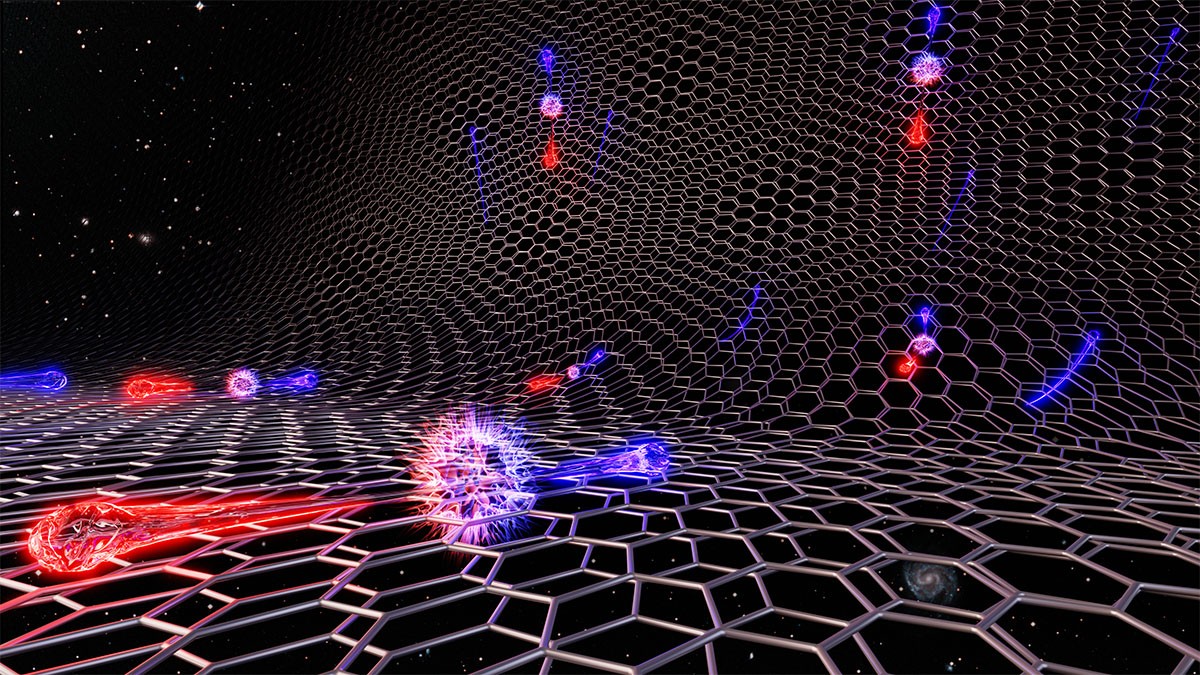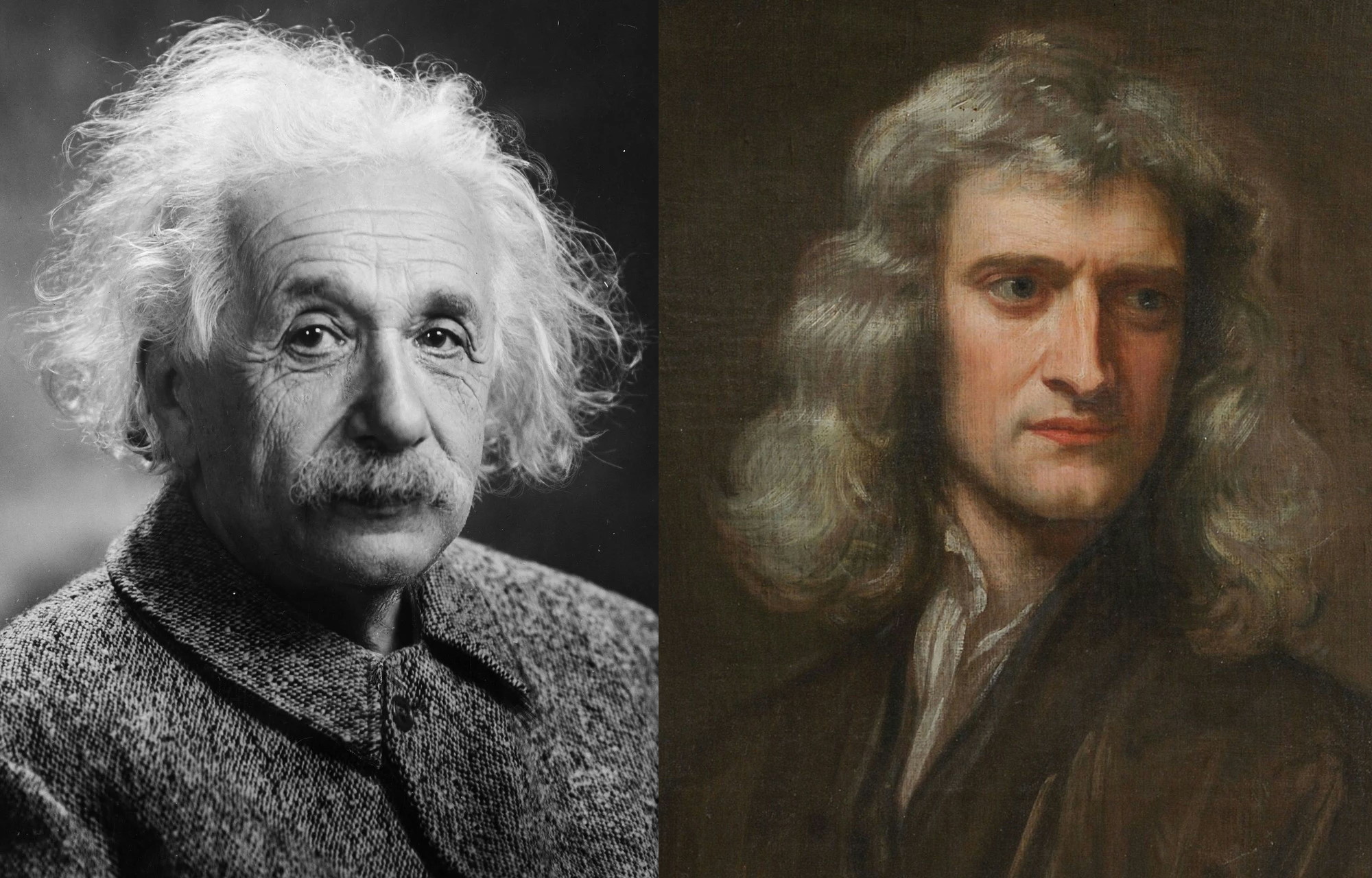How physics and a video game trick forever changed the NASCAR Championships
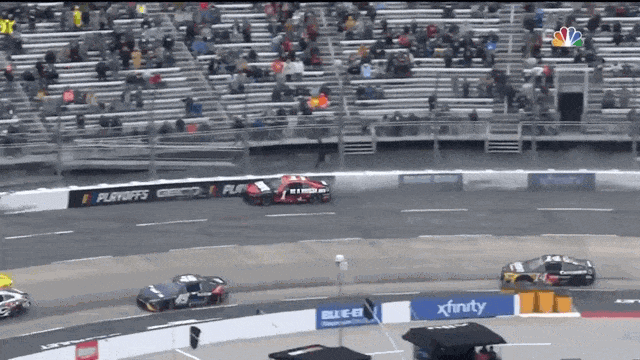
- On October 30th, 2022, on the final lap of the final qualifying race for the NASCAR Championships, 10th place Ross Chastain used an incredible tactic to vault into 5th place, qualifying for the Championship.
- Only four drivers would qualify for the Championship; with Ross Chastain on the outside looking in as the race wound down, a miraculous finish would be needed for him to qualify.
- By flooring the throttle and letting the wall guide him through the turn, Chastain passed five racers, including Denny Hamlin, to qualify for the Championships. Here's how physics made it possible.
If you’ve ever driven a car, you know how important it is for your tires to grip the road. As long as your tires aren’t slipping along the road, you remain in control of your vehicle; when you turn your steering wheel, the angle at which your tires grip the road changes, propelling you forward with an accompanying change in direction. If your tires do slip, however, you’ll start to skid, losing your ability to control which direction your car travels in. It’s why rainy, snowy, and icy conditions are so dangerous, and why traveling at a speed too fast for the road you’re on so frequently leads to car crashes.
And yet, on October 30, 2022 — in a scene that might seem to come straight out of a video game — NASCAR driver Ross Chastain did the seemingly unthinkable: he floored the accelerator through the race’s final turn, deliberately losing control of his vehicle in the process. Because of the specific way he executed this maneuver, however, he didn’t experience a catastrophic crash; he leapt up the leaderboard, climbing from 10th place to 5th. More importantly, he passed rival driver Denny Hamlin, allowing Chastain (and not Hamlin) to qualify for the NASCAR Championships. Here’s how this wild maneuver succeeded, and how physics made this video game-like trick possible in real life.
Whenever you’re in a car race, the ideal strategy is generally simple: go as fast as possible, as efficiently as possible, at all times, while remaining on the track and without losing control of your vehicle or crashing/colliding with any obstacles, including other vehicles and the walls. NASCAR provides perhaps the most straightforward conditions of any car race for achieving it, as:
- there’s a long, continuous loop of a track,
- where you only turn in one direction (left) through each of the turns,
- where the curves are banked and the tires are optimized for straightaway motions and left turns only,
- and the race ends after the completion of a certain number of laps around the track.
There’s a lot of skill involved in driving one of these cars through a NASCAR-like race, as each driver has their own unique car with its own specific capabilities, each driver has their own strategy and driving style, and most drivers have their own specific goals that go beyond simply trying to win the race. In particular, in a points-based system like NASCAR, where only the top four points-getters in the playoffs qualify for the Championship race, finishing in the top four overall is more important than a first-place finish in any specific race.
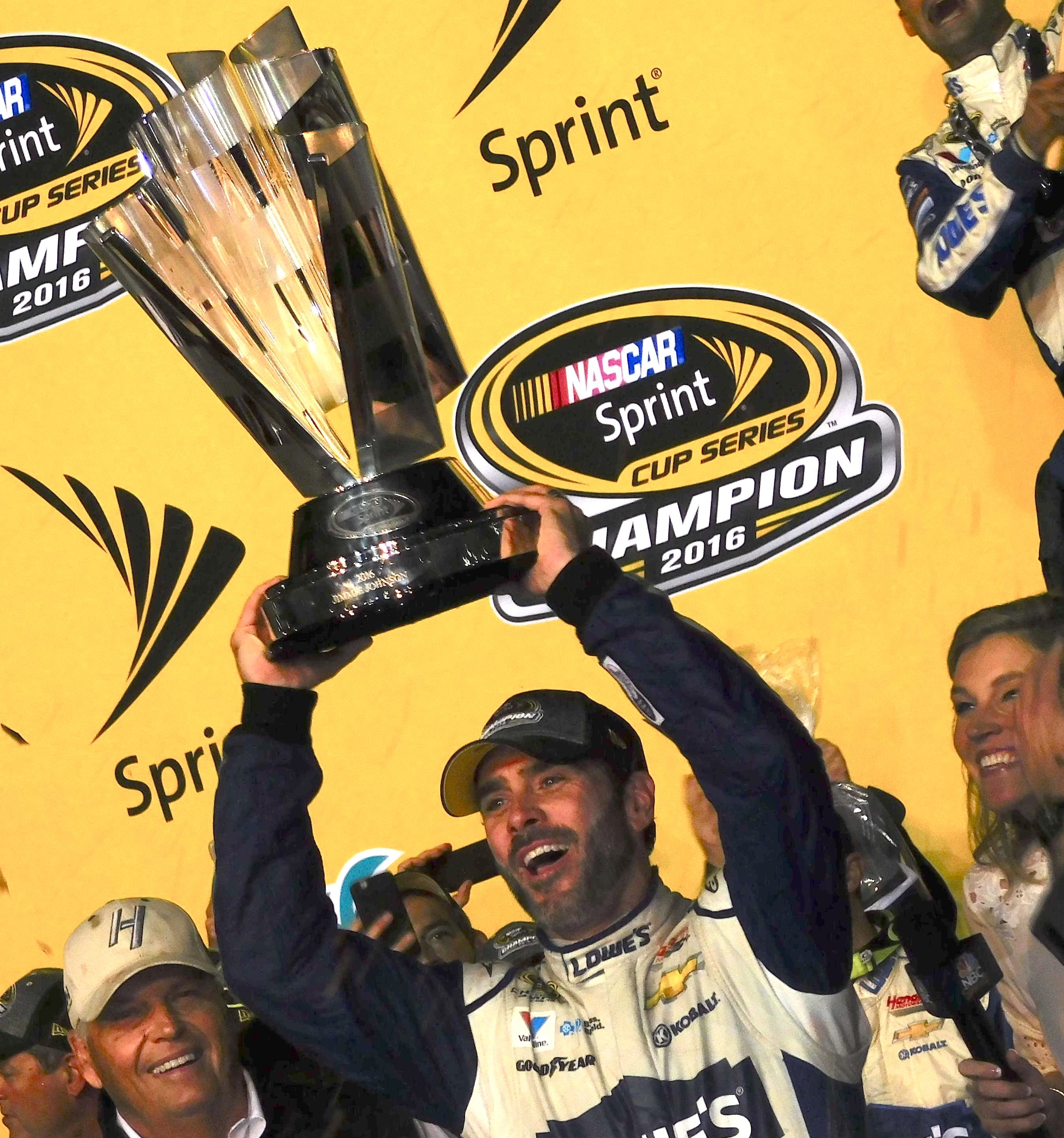
Headed into the final race of the season, driver Ross Chastain was in contention for one of those final four spots, along with Christopher Bell, Joey Logano, Chase Elliott, Ryan Blaney, and Denny Hamlin. Finding himself in 10th place in the race on the final lap, Chastain was poised to lose out on a spot in the Championship, as Bell would go on to win the race and Hamlin — ahead of Chastain by only two points — was up in 5th place. If Chastain wanted to qualify for the NASCAR Championship, he’d have to make up significant ground on the final lap.
What he did will likely go down as a simultaneously brilliant, dubious, and controversial moment in sports history. Headed into the final turn, he put his car in top gear and floored it: at full throttle, something that a NASCAR driver would normally never do. As he went through the turn, all the other drivers slowed down to keep their tires firmly gripped to the road and strained to turn their wheels by the exact, necessary amount: exactly what they should be doing. But Chastain instead took his hands off the wheel entirely, drifting to the outside of the track and scraping against the wall the entire time.
With his engine at full throttle, Chastain’s car outsped his competitors, catapulting him from 10th place into 5th: ahead of Hamlin (who fell to 6th place) and, importantly, enabling him to qualify for the final slot in the NASCAR Championship.
In general, doing anything that damages your car during the race is a terrible idea, as your car will perform worse — in terms of air resistance, top speed, loose parts, etc. — owing to the damage inflicted upon it. But this video game-esque maneuver, on the final turn of the final lap, was a stroke of brilliance, in that it led the driver, Chastain, to his desired outcome that wouldn’t have been achievable in any other fashion.
But why was this maneuver so effective, and how did this “wall-assist” work so successfully? For that, we have to turn to the science of physics.
Normally, when you drive a NASCAR racecar, you ideally want to:
- keep your car toward the inside of the track, as you cover less distance than if you’re farther away from the inside,
- travel as fast as possible at all times, the maximum speed you can achieve without losing your tires’ grip on the road,
- and brake as little as possible, as braking corresponds to a waste of fuel.
Those are the idealized conditions you want to achieve.
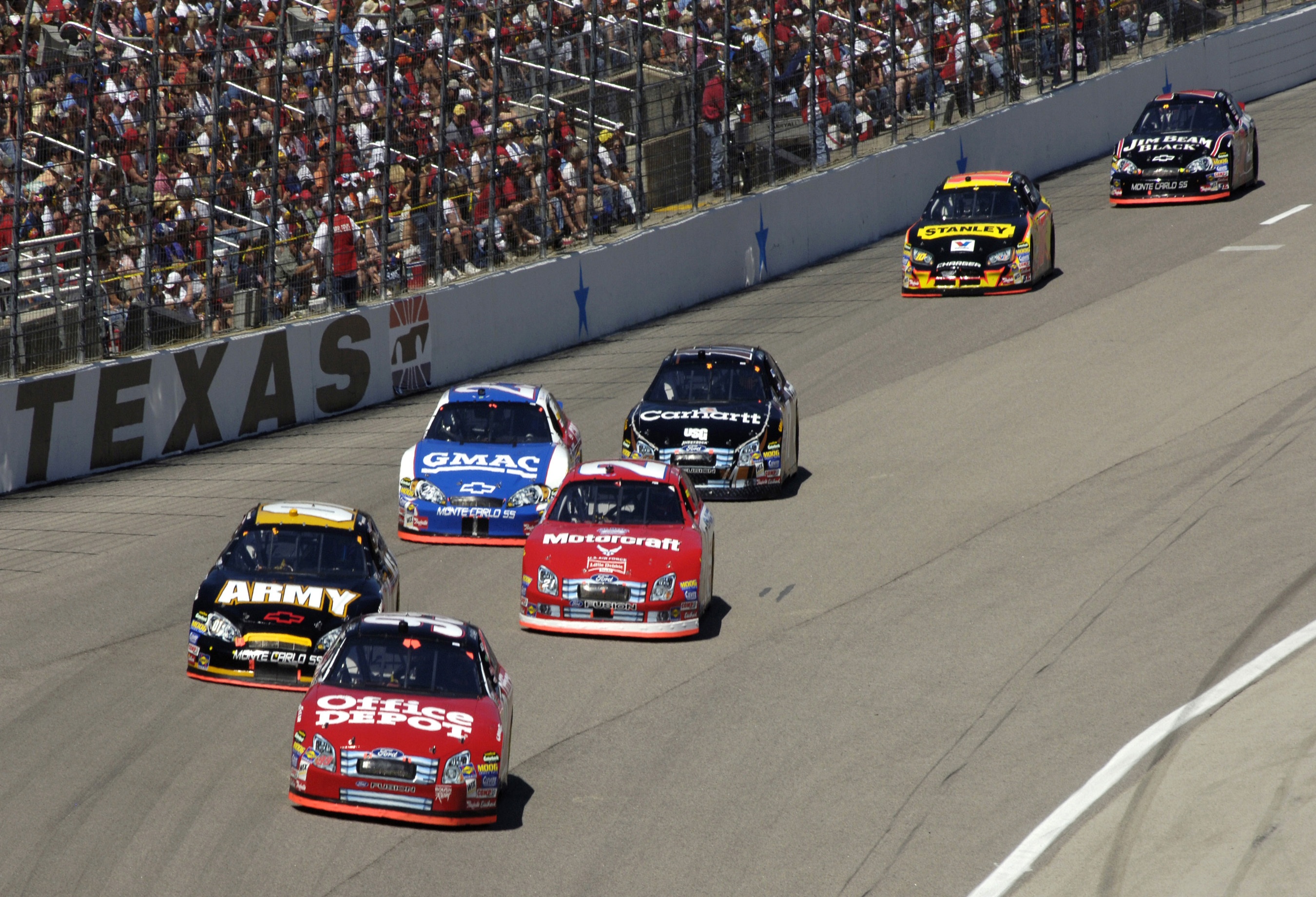
Because NASCAR racecars always circulate counterclockwise along their tracks, they are preferentially designed to only go straight (along the straightaway portions of the track) and to turn left (along the curved portions of the track). To accommodate this reality, tires used in NASCAR races are typically slightly asymmetrical, designed to make left turns easier. As a result, drivers need to fight against the car’s desire to turn left on the straightaways, but have an easier time hugging the inside of the turns on the curved portions of the track.
The curved portions are banked, which enables the cars to maintain higher speeds along the curved parts without losing that key “grip” between the tires and the road as compared to a flat track. However, the banking isn’t so severe that the cars can simply remain at full throttle at all times. If the driver were to maintain full throttle (or top speed) while going through a curve, the force of static friction between the tires and the track would be insufficient to cause the centripetal acceleration needed to keep the car from slipping. When a car goes through a turn too rapidly, it simply slides to the outside, often crashing into the outer wall.
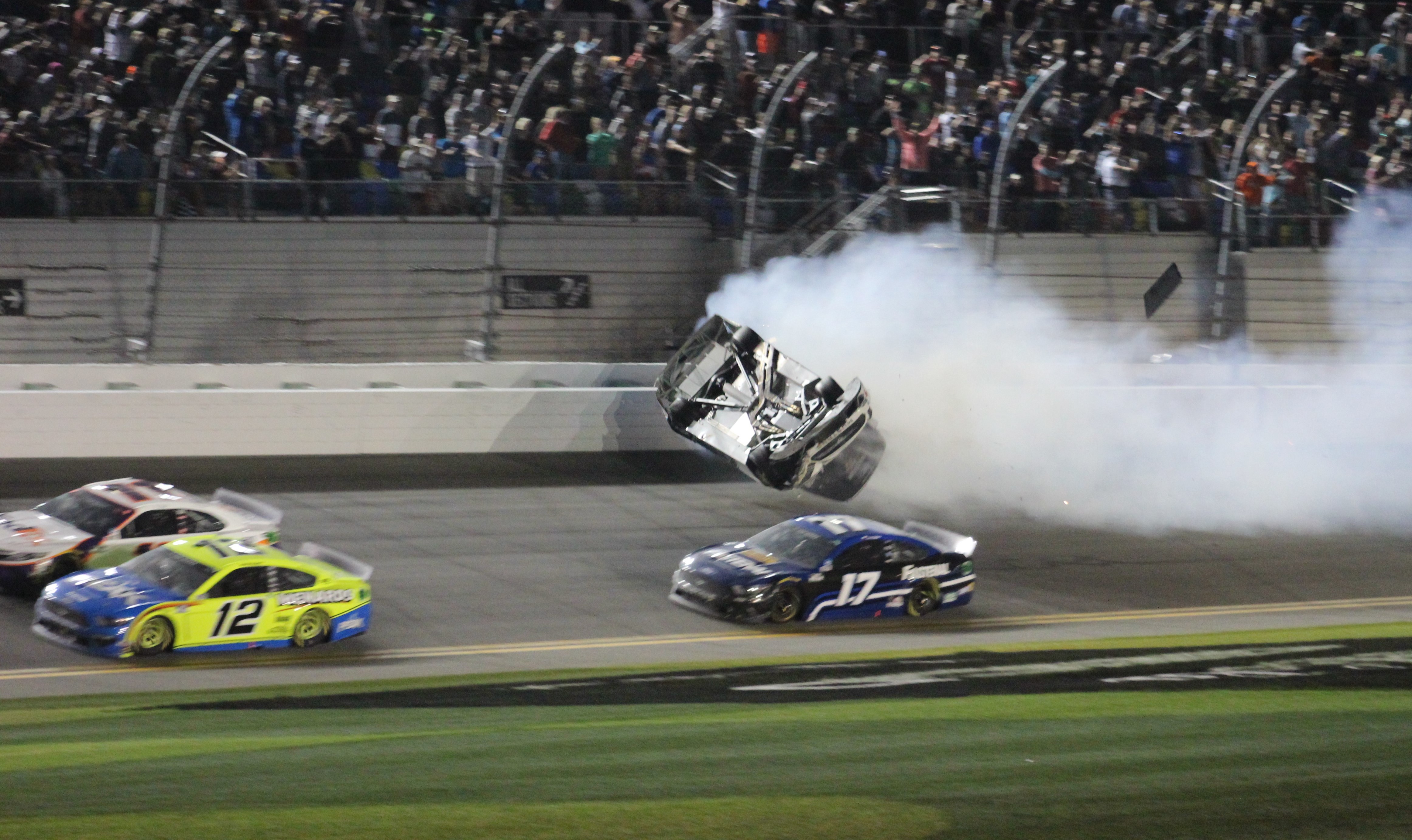
In order to accommodate this reality, NASCAR drivers typically have to find just the right balance that enables them to go at the maximum speed at all times without running into any of these problems. That normally translates into:
- keeping the throttle at 100% during the straightaway portions of the race,
- easing off of the throttle (and in some cases, but not all cases, braking a tiny bit) and slowing down just before entering a turn,
- then maintaining your throttle at a lower value, perhaps ~40% (and sometimes downshifting as well), during most of the turn,
- hugging the inside of the turn as tightly as possible to minimize the total distance that you must cover,
- and then accelerating at full throttle as you exit the turn, achieving your top speed as soon into the straightaway portions as possible.
This general strategy, obeyed by practically all NASCAR drivers under practically all circumstances, is ideal for finishing a lap in the shortest amount of time possible while inflicting the minimal amount of damage and wear-and-tear on the car itself.

But what if you didn’t care about damaging your car? What if the circumstances — that it’s the last turn of the last lap and you absolutely have to make up time and pass a number of the cars in front of you — dictate that the condition of the car at the end of the race is unimportant when compared to the need to pass other drivers?
That’s precisely the conditions that were in place for Chastain on October 30, 2022, and his unprecedented actions quickly paid off.
Whenever you’re traveling through a turn, there’s an inward force that’s required to keep you moving along the road without slipping outward: a centripetal, or center-seeking, force. If that turn traces out a circle with a particular radius of curvature, r, then the centripetal force needed to keep you moving without sliding outward across the track depends only on your speed, v, and the mass of your car, m. All told, the centripetal force is mv²/r, and that’s the reason why, under normal circumstances, you need to slow down and control your speed (i.e., reduce your “v“) to make it through the turn.
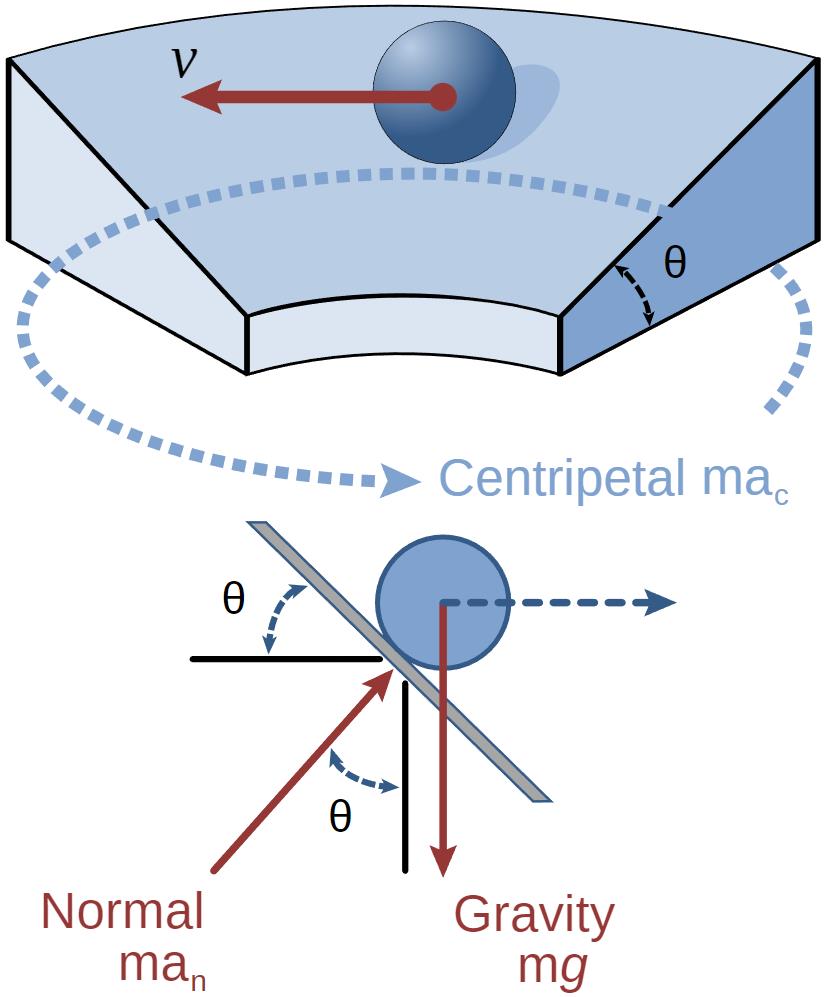
But in this particular instance, Chastain realized that relying on his tires to provide that frictional force would be insufficient; he’d have to lower his speed just like all the other drivers, and wouldn’t be able to move up to achieve the finish he needed. But what he could do, instead, is decide that he didn’t care about whether his tires provided that centripetal force through friction or not. All he wanted to do is go as fast as possible, even if it meant covering more ground, even if it meant damaging his car, even if it meant an inevitable collision with the outside wall.
So he went with an alternate strategy: let the outside wall, which he’s going to collide with anyway, provide that needed, additional centripetal force. With his car up against the outside wall, he could run his engine at full throttle, achieving the maximum velocity possible for his car. With the inward push of the wall against the car combining with the frictional force from the tires, the car will successfully navigate through the turn. There are only two big risks with this strategy:
- using the wall for friction necessarily causes damage to the car, and that damage could’ve led to a wreck, a tire blowout, and in the worst-case scenario, a death on the track,
- and, in terms of time, if the frictional force from the wall on the car slows down the car by too great an amount, the additional speed from going at full throttle might not be enough to enable the car — particularly because it must travel a greater distance as it travels through the outside of the turn — to overtake the others.
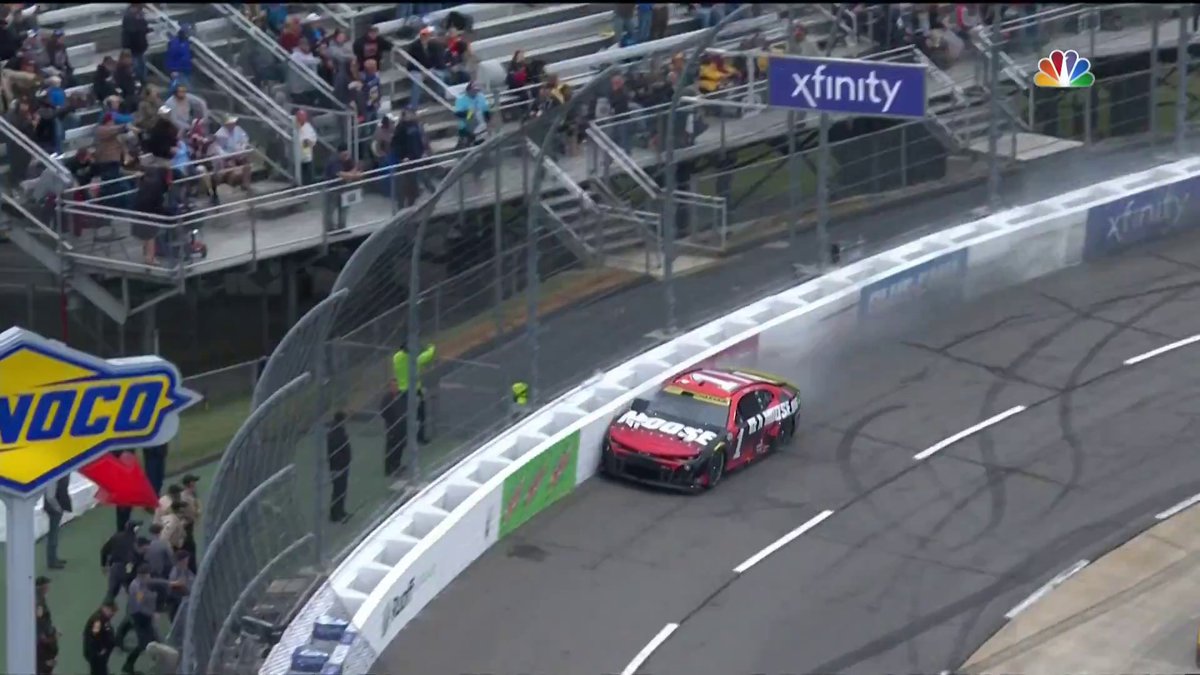
Fortunately for Ross Chastain, both of these points worked out in his favor. The damage to his car was minimal and didn’t affect his tires, his drivetrain, or the direction in which his car traveled. A look at the aftermath of his car showed that it was a relatively “smooth” scrape against the wall while it occurred. Additionally, the frictional force on his car was much less than the accelerating force from the tires with the engine at full throttle, meaning that Chastain’s car traveled significantly faster through the turn than his competitors.
Even with the additional distance of having to travel through the outside portion of the turn, Chastain was able to overtake five other drivers with this maneuver, catapulting him from 10th place to 5th place, knocking rival Denny Hamlin down to 6th. As a result of his wall-assisted final turn, Chastain finished six points ahead of Hamlin, enabling him to join Bell, Logano, and Elliott as the final qualifiers for the NASCAR Championship.

For whatever it’s worth, Chastain’s final lap time, where he incorporated this video game-inspired strategy into his driving, was 18.845 seconds: the fastest lap in the 75 year history of this track. The move will likely inspire copycats in the future, forcing NASCAR to evaluate the dangers inherent in wall-riding during the final lap. At some point, they’ll have to make a decision as to whether this risky maneuver will remain legal, or whether the risks are too great to allow it.
One thing’s for certain, however: the wall-riding strategy is fair game for the time being, where leading drivers now need to worry not only about being passed on the inside, but by a wall-riding outsider as well during the final, critical stages of a race. It’s possible that, down the road, NASCAR vehicles will even become optimized, on their right sides, for wall-riding on the final turn in the future. In a sport where the governing body allows risky maneuvers such as this, the only restrictions arise from the laws of physics. Understand those, and you can truly drive the ideal NASCAR race!


